Laughing Stock
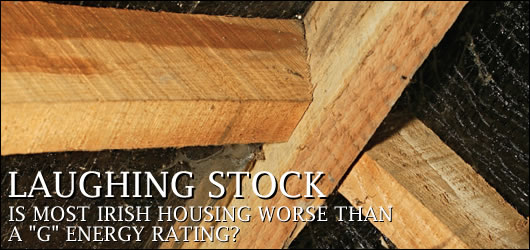
Patrick Daly, researcher in the DIT RiSE unit (Research in Sustainable Environments) highlights that in tandem with a justifiable focus on improving current building regulation standards the energy refurbishment of our existing housing stock must also become a priority, given the energy, environmental, economic and social impacts at stake. To highlight the design ‘performance’ that many pre-regulation houses were built to Daly has undertaken a retrospective DEAP case study assessment of an example house and its BER ratings, with staggering results.
Ireland has experienced phenomenal housing growth over the last decade. Our housing output has grown at a rate of 300% over the period from 1990 to 2004, with completions in 1990 of just under 20,000 per annum growing to over 75,000 by 2005, (see Figure 1) and rising further to 90,000 by 2006. There have been various industry forecasts of an expected peak in output in 2007 with forecasts of future output suggesting continued output at some fifty to sixty thousands per annum up to the end of the decade, which remains an incredible output.
These two recent decades and in particular the regulatory standards that were applied to this period of housing boom has had and will continue to have a critical impact on the energy and environmental profile on our housing stock. Historically, there are lessons to be learnt from the standards we have built to and from delays in implementation of standards; the cost of inaction will eventually be paid.
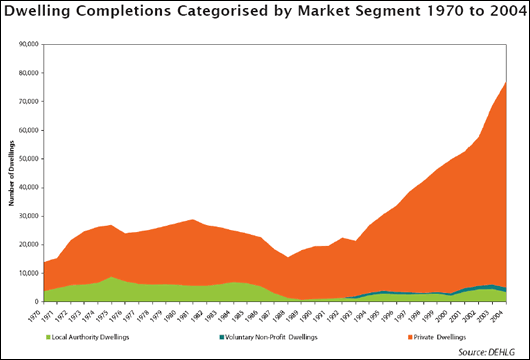
Figure 1: House completions
Source: SEI Report (Dec 2005), 'Energy Consumption and CO2 Emissions in the Residential Sector 1990 - 2004'
Pre building regulations stock
Despite such a significant proportion of our housing stock being built in recent decades, Ireland, in European terms, still has a relatively ‘young’ housing profile, with approximately 70% of its housing stock built since the 60s (See Figure 2). Yet Ireland’s housing stock remains predominantly pre building regulations, significantly due to the fact that mandatory energy efficiency regulations were not introduced into Ireland until 1991 (effective in 1992) nearly twenty years after our UK neighbours introduced building regulations in relation to energy efficiency in 1971 .
There is no definitive current estimate regarding the extent of pre building regulation houses in Ireland, however comparing the SEI review of energy use in the residential sector and the ESRI house condition survey of 2001-2 gives a useful indication of the extent of the situation.
According to the SEI report ‘Energy Consumption and CO2 Emissions in the Residential Sector 1990 – 2004’, which is based on CSO national statistical data from 2004, nearly 1.5 Million (1,436,798) permanently occupied dwellings were in the state at that time and of those 53% were built prior to the first building regulations in 1979. However these 1979 standards were ‘draft’ and applied to state funded housing only. If 1991 was taken to be a more accurate cut off point, then the actual percentage of pre building regulation houses at that time would increase, closer to approximately 75%, as Figure 2 shows.
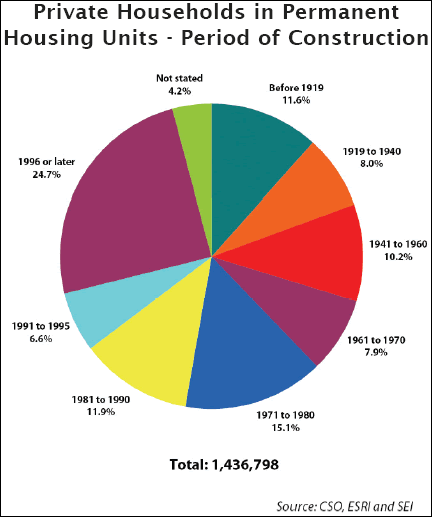
Figure 2 : Irish Housing Stock Age Profile
Source: SEI Report (Dec 2005), ‘Energy Consumption and CO2 Emissions in the Residential Sector 1990 – 2004’
Comparing the SEI report with the ESRI survey of Irish housing 2002 (see Figure 3) which was based on sample survey data from 40,000 homes, would indicate that some 50% of the stock was built prior to the 1979 threshold, which again would equate to approximately 75% of the stock being pre building regulations, taking 1991 as the reference point for national mandatory building regulations, which marries with the SEI study.
Given the extent of house completions in the intervening years since the SEI figures from 2004, one could estimate that approximately 60% of the housing stock remains of the pre 1991 building regulations era, notably lacking insulation standards.
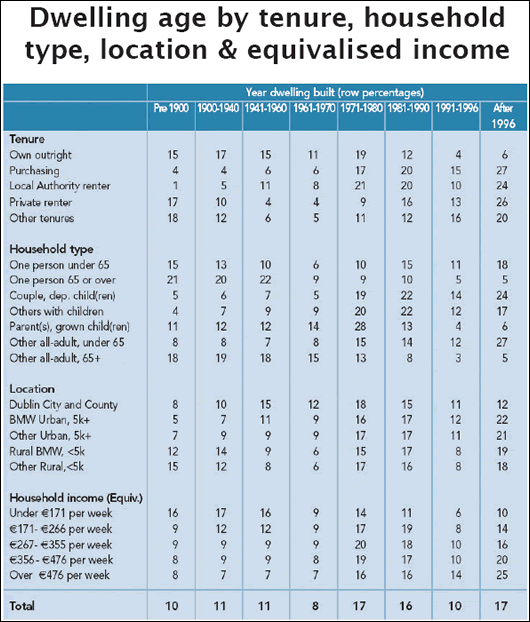
Figure 3
Source: ESRI Report (Nov 2003), ‘Irish National Survey of Housing Quality 2001-2002’
Energy efficiency standards and impacts
The result of this delay in introducing mandatory energy efficiency standards in Ireland is that a significant proportion of what includes our ‘modern’ housing stock was built in a non energy / thermal regulated context and as such is seriously lacking the most basic energy efficiency measures. This has undoubtedly contributed to a significant energy and CO2 penalty in Ireland and in resulting statistics that give us one of the highest levels of fuel poverty and ‘excess winter deaths’ in Europe.
Energy and CO2
In energy and CO2 terms the pre building regulation housing stock is consuming a significant proportion of the residential sector’s overall energy use. The 1999 Green Paper on Sustainable Energy forecast that by 2010, 79% of the energy in the residential sector would come from pre 1981 housing stock representing 47%. The SEI study into residential energy also updated those figures and suggests that 53% of the stock is pre 1981. However, the actual threshold for mandatory national energy efficiency building regulations is 1991 and as such the proportion of energy consumption by our pre building regulation housing stock is likely to be above 80%.
The result is that our pre building regulation houses are a significant factor in how Ireland compares across the EU, with Ireland having an average energy consumption per dwelling (climate corrected) 35% above the EU 15 average (2003), and our CO2 emissions per dwelling (climate corrected) a staggering 97% above the EU 15 Average (2003).
Fuel poverty
Research over recent decades has strongly indicated indoor air temperatures to be a significant factor in the statistics of increased excess winter mortality (EWM). Peter Clinch and Jonathan Healy of the ESRS research unit in UCD carried out a study in 1999 comparing excess winter deaths in Ireland (from cardiovascular and respiratory causes) and noted that “excess winter mortality due to poor housing standards is among the highest in northern Europe”, with just under 1500 deaths attributable to EWM in the republic. On an all Island basis these figures are more likely to be circa 3000.
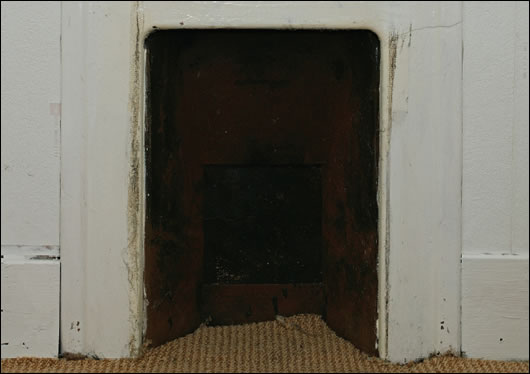
The findings of their study, which were based on comparisons with Norway, (selected on the basis of best demographic fit and superior housing standards) correlate with similar research in the UK and strengthen the link between excess winter mortality in Ireland and poor thermal standards in housing. Notably, the study indicated that some 40% of EWM deaths may be due to this phenomenon, which has been described as fuel poverty, with the elderly being seriously exposed.
SEI in 2003 carried out a comprehensive study, ‘Fuel Poverty in Ireland’, based on a sample survey, and estimated that some 17% of homes - over 227,000 - were in need of assistance with 62,000 homes experiencing persistent fuel poverty and 165,000 experiencing intermittent fuel poverty. However the actual situation could be worse and the figures could be exacerbated by the recent high rises in fuel prices.
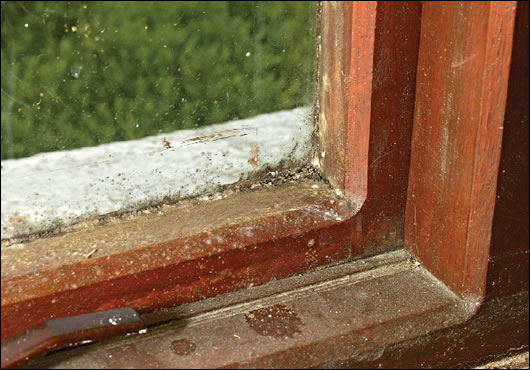
The correlation between fuel prices and energy efficiency of buildings is pivotal to the issue of fuel poverty, and given the significant proportion of pre regulation houses in Ireland, and our rising fuel costs, more and more people may be finding it difficult to achieve adequate and affordable warmth, bringing them into the fuel poverty net. In the context of rapidly rising fuel prices, which are forecast to continue, a review of the extent of fuel poverty and of strategies to combat it would be timely.
Pre building regulations DEAP case study
To highlight the gap between building regulations houses and our predominant pre regulation housing stock I undertook a retrospective DEAP assessment of a typical three bed semi detatched house built to a range of pre regulation and upgrade specifications and compared them on a theoretically expanded BER scale.
The house specification, which in terms of its fabric would have been typically un-insulated and single glazed, was varied over the following heating system fuel and boiler efficiency variations, prior to looking at some typical improvements that have generally been made to many of these house types.
a) A house heated by open fire (3-4 fireplaces plus back boiler), as was typical of many council houses and houses of pre central heating periods.
b) A House heated by a solid fuel central heating system, as was common, particularly in rural areas.
c) A house heated by an oil-fired central heating system, a common upgrade.
d) A house with typical improvements, including attic insulation, double glazing, lagging jacket and so on.
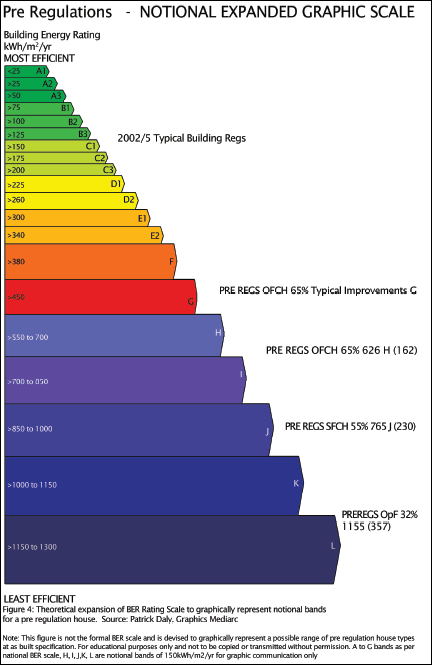
Off the scale
The result was rather shocking in that the DEAP results were not even graphically represented on the formal BER scale, as its lower G band effectively ranges from 450 kWh/m2/yr to infinity and beyond!
To graphically represent the scale of the example house I had to notionally expand the BER scale from its final G band, which even with a more generous band width, (G to F being 70 kWh/m2/yr and my expanded scale being over double that at 150 kWh/m2/yr) resulted in a tripling of the band scope and the creation of my theoretical pre regulation bands H, I, J, K and L. Otherwise I would have being exhausting a lot of the alphabet. See Figure 4, which is a graphically adjusted scale and not a formal BER scale.
Results:
Open fire
An un-insulated single-glazed house specification heated by open fires at 32% efficiency equated to a borderline K-L ‘rating’.
Solid fuel central heating
If this house sample had been upgraded to, or built with, a closed manual feed solid fuel fire with central heating system at 55% efficiency, its rating would have jumped dramatically to an I band.
Oil fired central heating system
If the house was centrally heated with an external oil fired boiler of 65% efficiency (typical of pre regulations) then its rating would have risen to my H Band, still off the formal scale.
Pre regulations: notional expanded graphic scale
Figure 4: Theoretical expansion of BER Rating Scale to graphically represent notional bands for a pre regulation house. Source: Patrick Daly
Note: This figure is not the formal BER scale and is devised to graphically represent a possible range of pre regulation house types at as built specification. It is for educational purposes only and not to be copied or transmitted without permission. A to G bands are as per the national BER scale, H, I, J,K, L are notional bands of 150kWh/m2/yr for graphic communication only.
The reality is that many pre regulation houses did not actually consume the amount of energy indicated by DEAP and on the theoretical scale, as most likely they simply did not achieve the comfort temperatures that the DEAP model is calculating to, which is a key point. DEAP is measuring the notional performance of the house as an asset, assuming a particular occupancy and the amount of energy needed to heat the house up to set comfort levels. In reality, these houses could not economically achieve the comfort levels or energy consumption calculated. Instead people lived in sub standard housing, with low, often high-risk indoor temperatures coupled with condensation and possible mould problems. Often families only heated particular rooms or a particular room and this practice continues. Mix these conditions with low income or poverty levels and a physical or age susceptibility to cold stress and the risks are not just financial.
With some 60% of our housing stock pre building regulations, and the ‘efficiency’ profile indicated by this simple DEAP study, one can see why Ireland has such a high levels of EWM and why most (at least 80%) of our residential energy consumption and CO2 output is coming from the existing pre regulation housing stock.
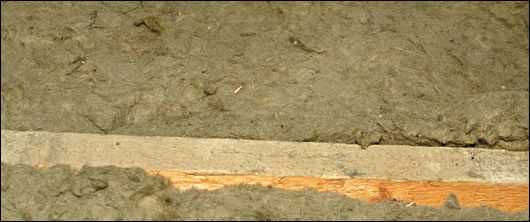
Attic insulation is typical of energy improvements made to much of Ireland's pre building regulations stock
The case study highlights just how energy inefficient we have been building our homes, right up to 1991, and how far away these house types are from typical 2002/5 building regulations, which would generally, subject to a range of parameters, rate at the B3/C1 threshold, (if they have a reasonable fuel and boiler efficiency). Not that our current 2002/5 standards are radical in EU terms, with our current regulations behind the England & Wales, Northern Ireland and emerging Scottish standards, not to mention the more advanced members states such as Denmark.
Energy refurbishment: typical improvement
In general, most pre regulations houses have had some form of improvement undertaken over the intervening years and the ESRI housing quality survey gives indications of the extent of energy efficiency measures, or lack thereof, across the Irish housing stock. Typically many pre regulations houses would have added 100mm attic insulation and replaced single glazing with double glazed systems. Even a basic air filled cavity would improve significantly beyond single glazing. Coupled with the installation of a central heating system and adding a lagging jacket to an existing cylinder this would bring our oil heated pre building regulations case example up to the G band and on onto the formal BER Scale.
Undertaking energy refurbishment of an existing pre building regulations house is considerably more expensive and restrictive than at the initial design and build stage. However, recent fuel price rises, and the welcome Greener Homes scheme have been a critical factor in the emergence of the ‘energy refurbishment’ market, which is set to expand in 2009 with mandatory BER ratings for all second hand dwellings at point of sale or rent.
Planning
The planning process itself and in particular some of its conditions and conventions may have to be reviewed if we are to promote and facilitate energy refurbishment on a larger scale. The recent guidelines from the Department of the Environment exempting many residential scale renewable technologies from planning are very welcome and we need to see this extended into building form and so on.
Issues such as building lines and restrictions on altering front elevations need to be relaxed to facilitate re-design of dwellings to accommodate correction of poor design and re-façade work. Passive and active solar systems are one area where planning can be restrictive, for example. Why can’t we see, in cases where historical conservation is not critical, extended solar facades to the frontage of existing housing and apartments?
Many solid masonry wall constructions are well suited to be upgraded with the use of external wall insulation systems (EWI), which should be promoted. On a larger scale, existing streets or communities could in the future be integrating energy centers into their existing neighborhoods, which the planning process and local authorities could facilitate.
Costs of inaction
There are lessons to be learnt by looking back at the history of building control in Ireland, especially in relation to energy. Delays in implementation of comparatively weak standards have left Ireland with a housing stock legacy, the inheritance of which is rather costly.
Our pre-regulation housing stock is consuming the vast proportion of the energy within the residential sector and this is being paid for by private owners, tenants and tax payers via ever growing fuel allowances.
Environmentally, our housing legacy is a major contributing factor to a chronic volume of carbon emissions emitting from the residential sector, which relative to the EU average is alarming. Even here we are already paying additional financial costs via carbon trading and possible Kyoto penalties.
Socially we have been and are continuing to pay a huge price, and not just in terms of quality of life and health. The reality is that with our alarmingly high EWM figures many deaths in Ireland must have been significantly contributed to by substandard and highly energy inefficient housing. Is it possible that more deaths in Ireland are significantly or partly due to living in sub standard housing than due to the appalling statistics of MSRA or road deaths, which grab our headlines daily? I suspect so.
Delays in implementation and low standards in housing are costing Irish society, and will continue to do so; costs that are not just financial but environmental and social. Individuals, families and communities are paying a heavy price for inaction, both past and present. We urgently need to radically advance our building regulation standards and to set milestones to keep apace of the leading EU member states in the move to super low energy housing and even zero carbon housing. However, in tandem with that we need some serious action to address the issues of our existing housing stock and a firm commitment to eradicate fuel poverty.
There are lessons to be learnt by looking back. What we need now is foresight.
References:
SEI review of energy and co2 in residential sector
O’Leary F., Howley M. and O Gallachoir B. (Dr), SEI Report (Dec 2005). Energy Consumption and CO2 Emissions in the Residential Sector 1990 - 2004. Dublin: SEI
ESRI housing survey 2001/2
D Watson and J Williams ESRI Report (Nov 2003). Irish National Survey of Housing Quality 2001-2002. Dublin: DOEHLG
ESRS housing and excess winter mortality in Ireland
J. Peter Clinch and John D Healey, ESRS Paper (1999). Housing Standards and Excess Winter Standards in Ireland 1999 ESRA UCD. Dublin: University College Dublin Department of Environmental Studies.
SEI fuel poverty in Ireland
SEI Report (Nov 2003), A report on Fuel Poverty and Low Income Housing 2003. Dublin: SEI
Patrick Daly is a qualified UK SAP Plan Assessor and Irish DEAP BER Assessor, and leads BESRAC (Built Environment Sustainable Research and Consultancy), an environmental design consultancy, where he is engaged in low energy design consultancy to architects, builders and developers including advanced ratings, House of Tomorrow proposals and air pressure testing. Patrick is currently undertaking research in Irish Part L compliance and carbon benchmarking.
Photographs © Viewit
- Articles
- Energy Performance of Buildings Directive
- Laughing Stock
- DEAP
- Patrick Daly
- BER
- ESRI
- energy consumption
Related items
-
 Embodied carbon & zero emission targets adopted in new EPBD
Embodied carbon & zero emission targets adopted in new EPBD -
EU votes through EPBD recast
-
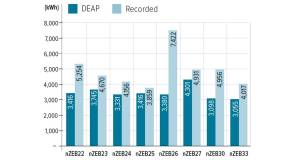 When is an A-rated home really A-rated?
When is an A-rated home really A-rated? -
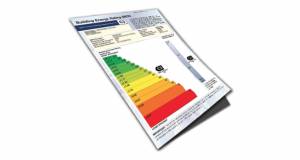 BERCerts.ie offering ventilation validation
BERCerts.ie offering ventilation validation -
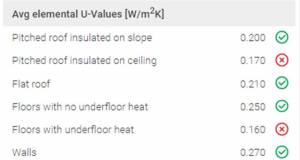 Software errors create false NZEB compliance picture
Software errors create false NZEB compliance picture -
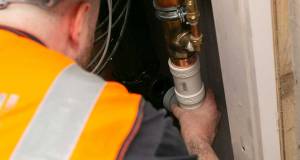 WWHR an easy & costeffective route to Part L compliance — Showersave
WWHR an easy & costeffective route to Part L compliance — Showersave -
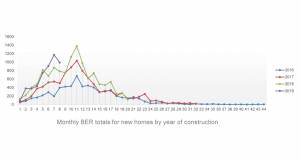 BER data indicates national house building growth – except for Dublin
BER data indicates national house building growth – except for Dublin -
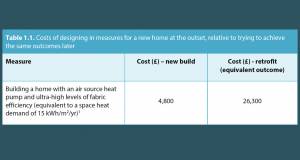 New housing should be to passive house standard — Climate Change Committee
New housing should be to passive house standard — Climate Change Committee -
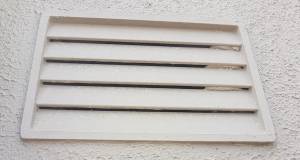 BER data: sick buildings risk while new build surges
BER data: sick buildings risk while new build surges -
 Saint-Gobain launches free nZEB training courses
Saint-Gobain launches free nZEB training courses -
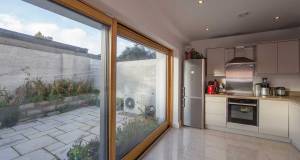 Architect returns to roots with A1 rated 'house of the people'
Architect returns to roots with A1 rated 'house of the people' -
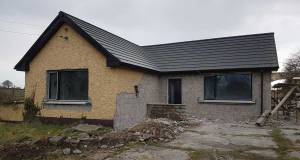 G-rated Meath bungalow aims for A rating — without renewables
G-rated Meath bungalow aims for A rating — without renewables

